The Art of Márton Barabás in the Budapest Hall of Art
One of the most characteristic abstract motifs of Márton Barabás’s (1952) stylistically and thematically diverse body of work is music, alongside an investigation of such musical concepts as repetition, and the relationship of the part to the whole. Another is the specific motif symbolizing the physical embodiment of music, the piano (and other instruments and objects related to music), which play a central role in each of his creative periods as an organizing element and a distinctive trademark.
Barabás’s artistic career began during his university years, in the late 1970s. His early works, which generated a great deal of attention, already indicated that
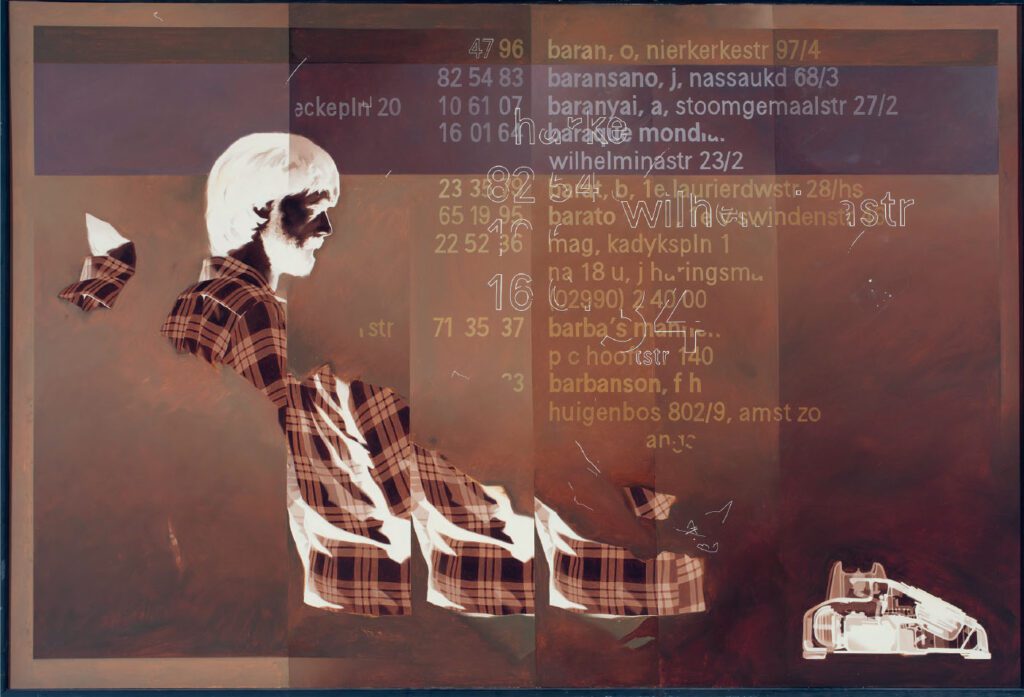
Szombathely

80×135cm. © Hungarian National Gallery
his artistic focus would be directed toward the re-use and re-contextualization of objects of cultural memory which were ‘past their sell-by date’. This focus at times emerges in his works in the form of quiet conceptualism, or through sensual painting, or with the strict diligence of the preparator, or in overflowing playfulness and humour. During the first half of the 1980s his works were characterized by a photorealist approach and a departure from the traditional image space, while in the second half of the decade he created works in the spirit of the ‘subjective historicism’ of new painting. During the 1990s, his work in the plastic arts was dominated by formal puritanism and constructivism. Then, in the late 1990s, he returned to painting through the motivic development of objects and spatial lines, and in the genre of installations. From the beginning of his career to the present day, his approach has been that his works are not simply separate, stand-alone artworks, but also on occasion (at exhibitions) consciously become part of a larger installation, supplemented with his other artworks, while other objects in the Barabás universe, such as piano-key spirals with spatial lines, paintings together with sculptures, objects together with books, even works from different periods of his career, all create a wider context.
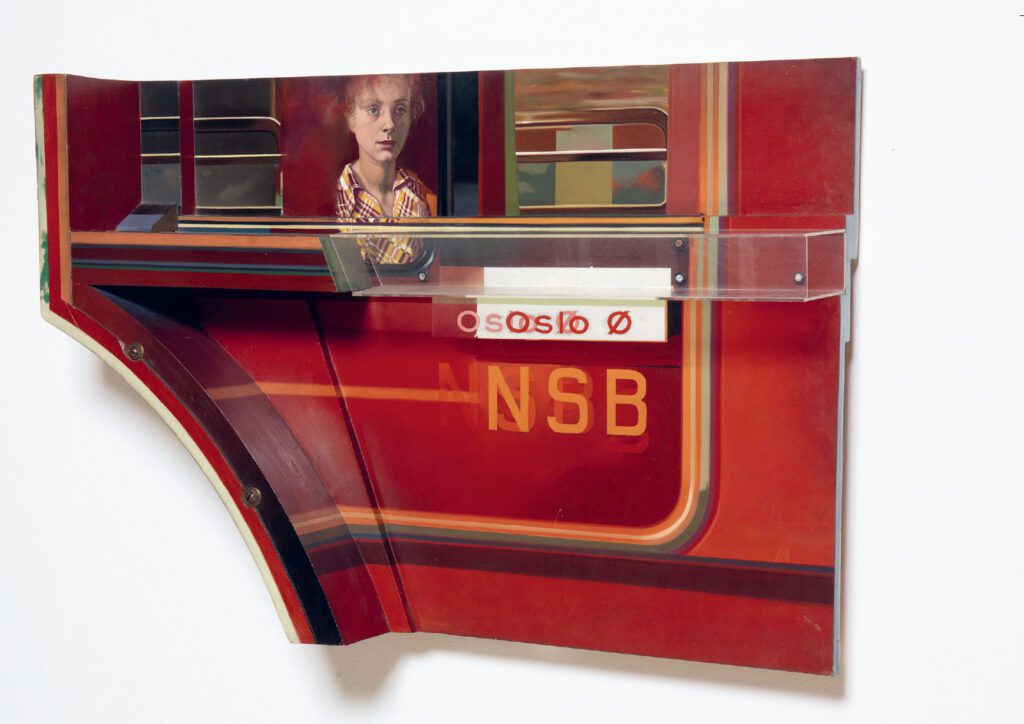
Vác
Mapping Márton Barabás’s oeuvre, which spans four and a half decades, is an exciting task not only because of its visual diversity, but also because it pulsates with the important issues, problems, and dilemmas of the art of the 1980s, 1990s, and around the turn of the millennium. A retrospective exhibition held in an art gallery can be considered an experiment in reconstruction: the aim is to trace the connections, the motivic shifts, and the use of symbols across the artist’s creative periods, arranged in loose chronological order.
Translated by Thomas Sneddon
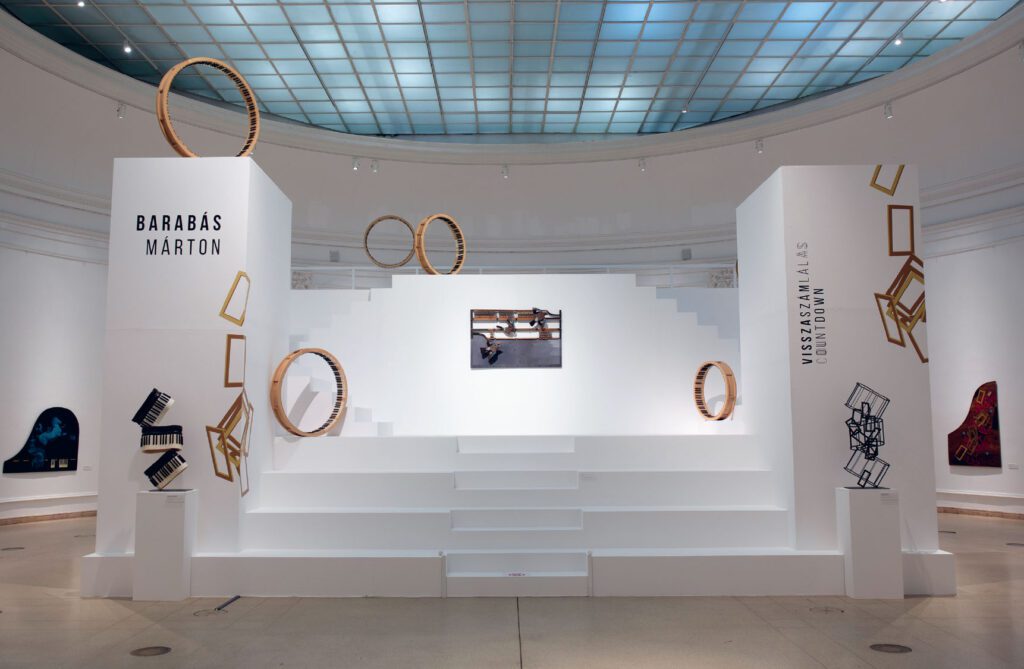
Infinity in Three Voices 2020–2021, iron, wood, ivories, 106×25×60cm
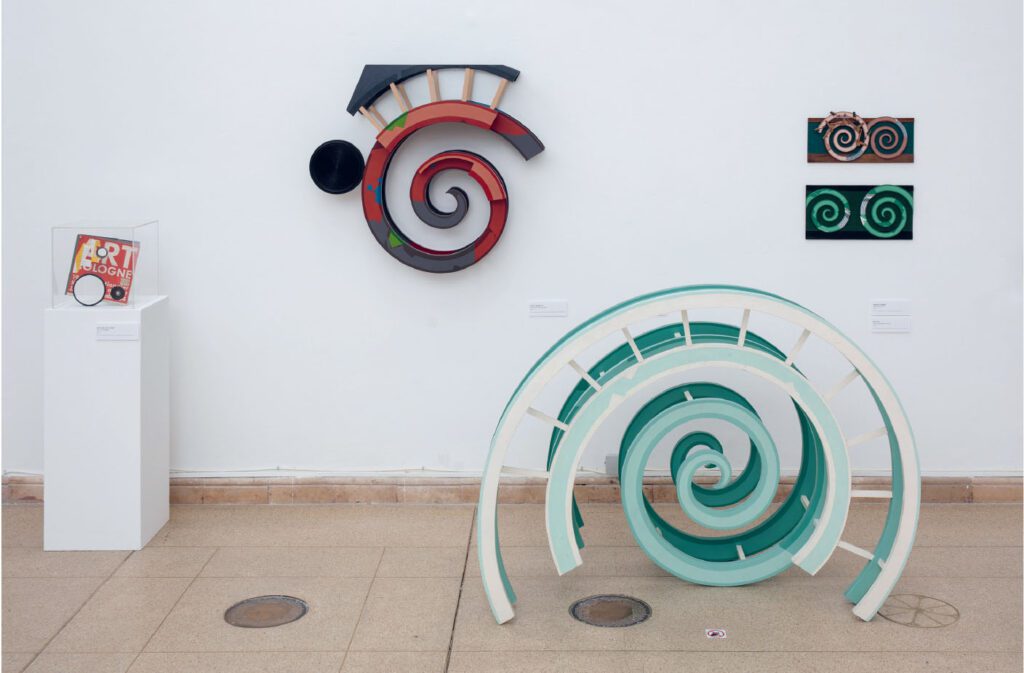
Big Vortex, painted wood, 121×160,5×40cm, 1995. © Márton Barabás
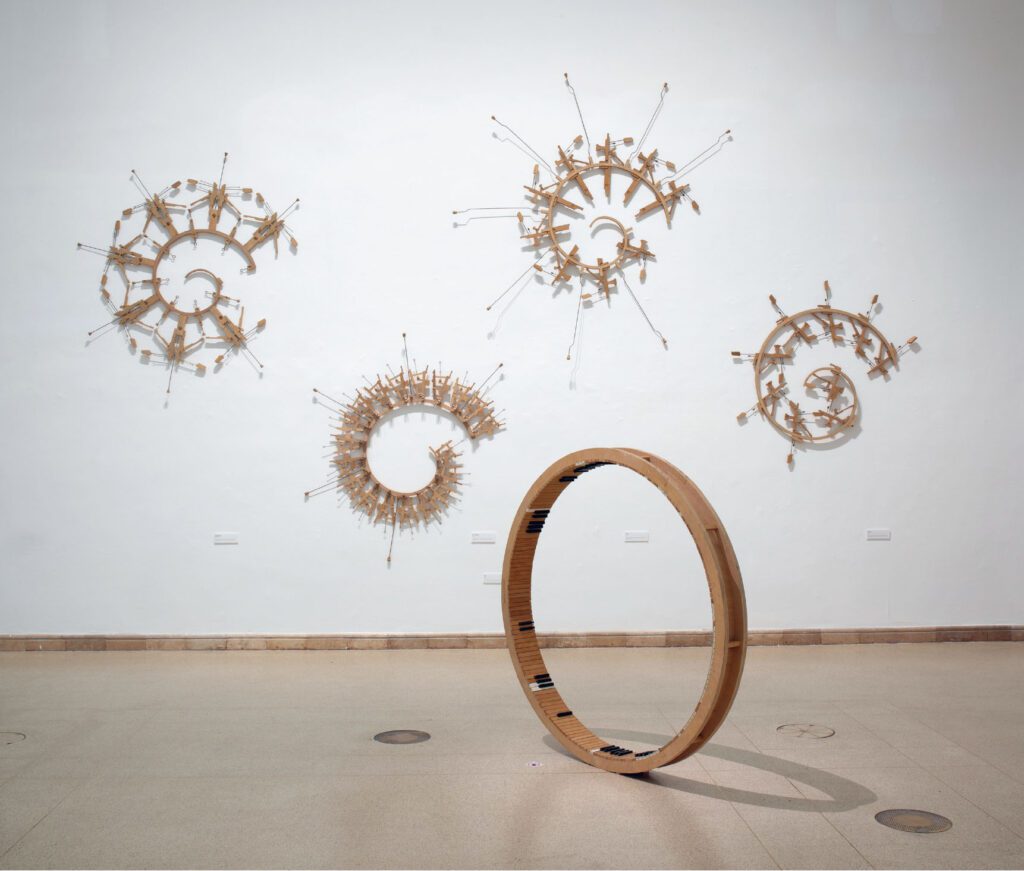
copper rods, 214×203×3cm, 2000. /// Grand Nautilus, nutwood, copper rods, 2004. ///
Touches, nutwood, copper rods, 187×162×3cm, 2004. © Ludwig Museum, Budapest.
/// Pole, wood, ivories, 155×155×15.2cm, 1996. © Márton Barabás
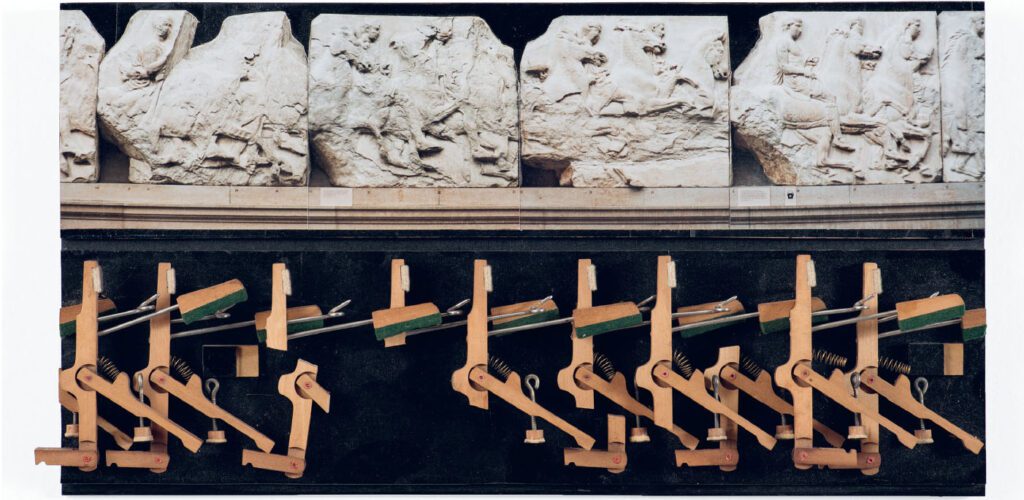

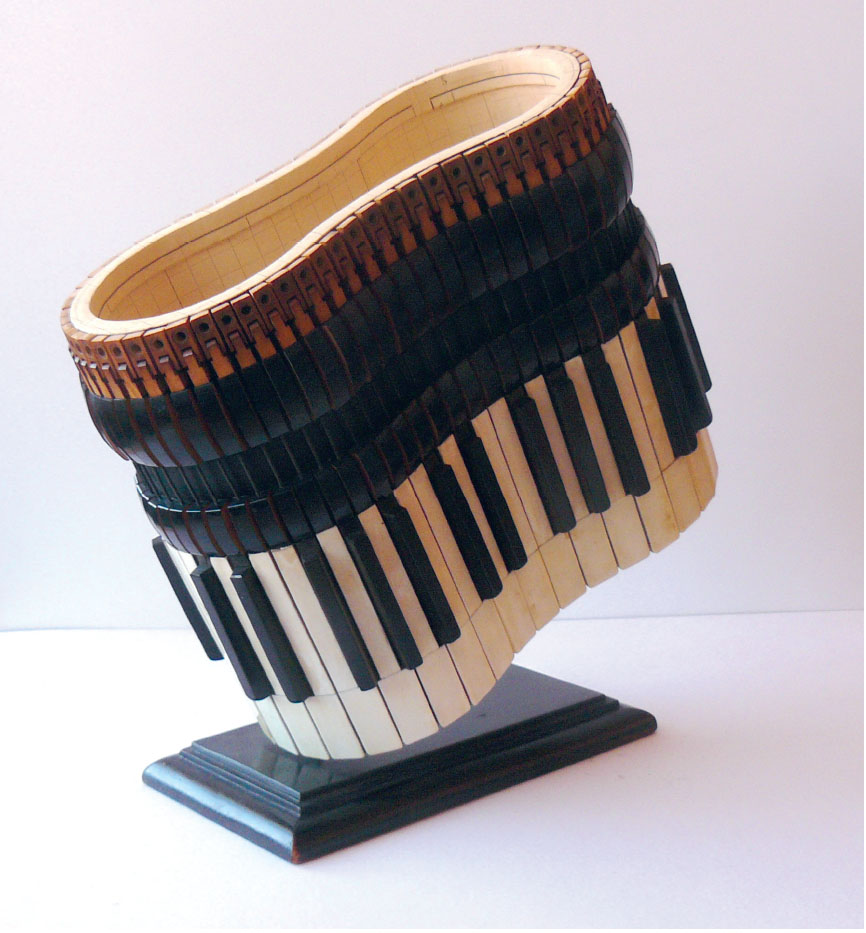

73.5×103.5×5.5cm, 2008. (Material: inner piano key-action) © Márton Barabás
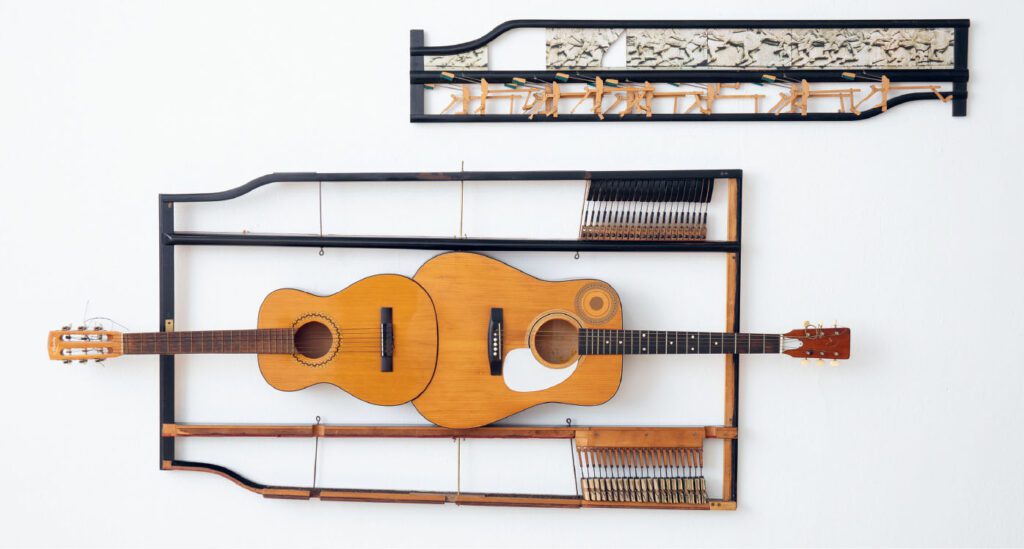
wood, photo, 25.6×135.6×3.5cm, 2017. © Márton Barabás
